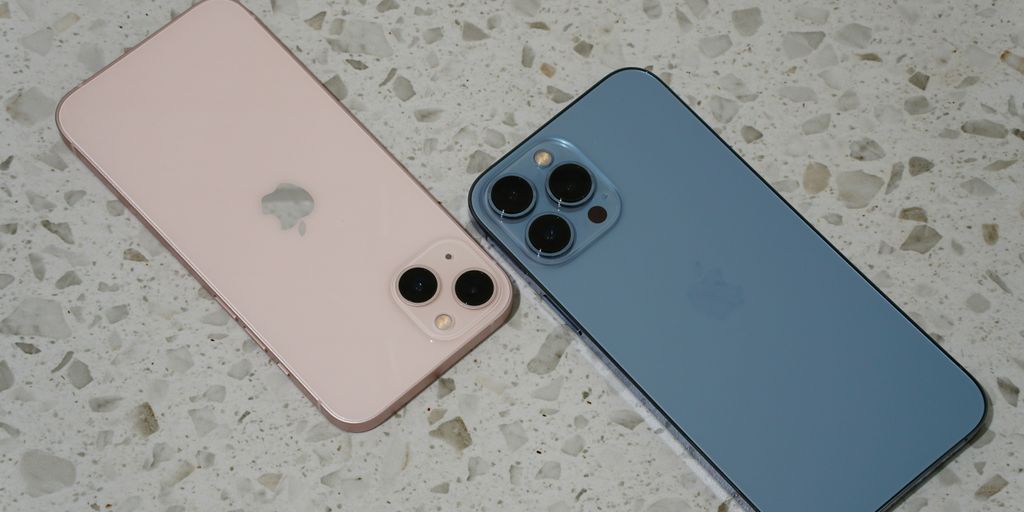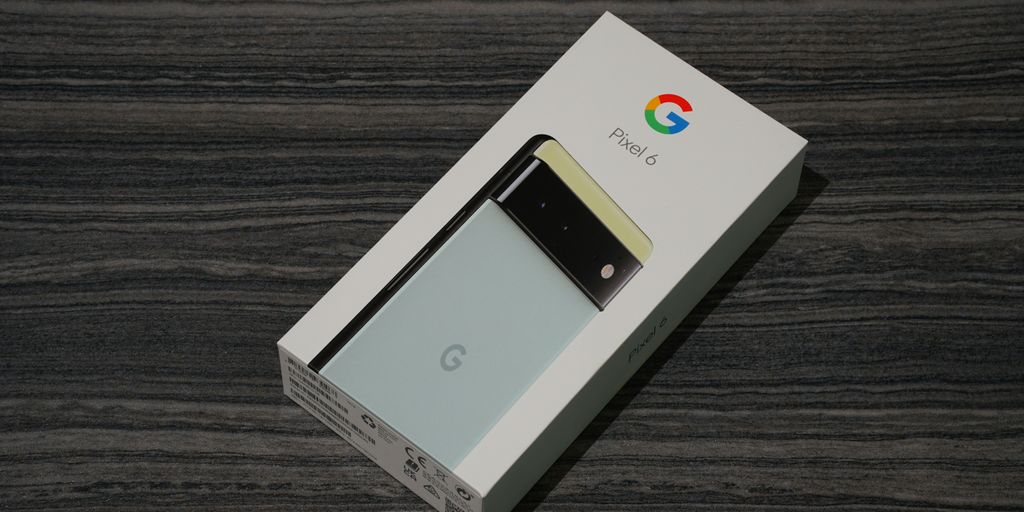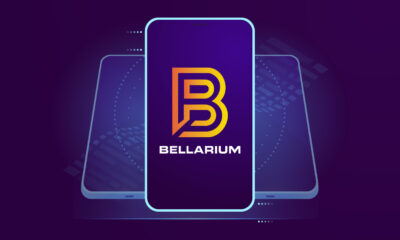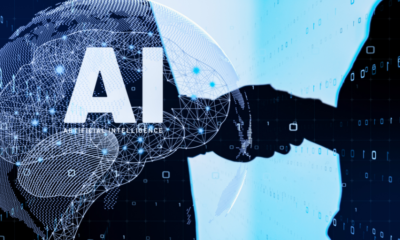Innovations
5G Networks Innovation: Unlocking New Possibilities

The rise of 5G technology marks a significant step forward in how we connect and communicate. This new generation of mobile networks not only offers faster speeds but also opens up a world of new opportunities across various sectors. From healthcare to smart cities, 5G is set to transform our daily lives and industries alike. In this article, we will explore the key features of 5G and its potential impact on our future.
Key Takeaways
- 5G provides much faster data speeds, enabling quicker downloads and smoother streaming.
- It supports a massive number of devices, making it ideal for the growing Internet of Things (IoT).
- Industries like healthcare and manufacturing will see major improvements due to 5G’s low latency and high reliability.
- 5G enhances immersive experiences in gaming and entertainment through augmented and virtual reality.
- Private 5G networks offer improved performance and security for businesses, paving the way for innovative applications.
The Technical Foundations of 5G Networks
5G technology is built on several key principles that make it a significant upgrade from previous generations. At its core, 5G utilises advanced techniques to enhance connectivity and performance.
Understanding OFDM and MIMO
5G employs Orthogonal Frequency-Division Multiplexing (OFDM), which allows data to be transmitted over multiple frequencies simultaneously. This method improves data rates and reduces interference. Additionally, Multiple Input Multiple Output (MIMO) technology uses multiple antennas at both the transmitter and receiver ends, enhancing the capacity and reliability of the network.
Role of Small Cells and Towers
To support the high-speed demands of 5G, a dense network of small cells and towers is essential. These small cells are crucial for:
- Improving coverage in urban areas.
- Reducing latency by bringing the network closer to users.
- Supporting massive device connectivity, especially in crowded environments.
Network Slicing Capabilities
5G introduces network slicing, which allows operators to create multiple virtual networks on a single physical infrastructure. This capability enables:
- Tailored services for different applications, such as IoT and high-definition video streaming.
- Efficient use of resources by allocating bandwidth based on demand.
- Enhanced performance and reliability for critical applications.
The evolution of 5G networks represents a pivotal moment in telecommunications, unlocking new possibilities for industries and consumers alike.
In summary, the technical foundations of 5G networks are designed to meet the growing demands of modern society, paving the way for innovations that were once thought impossible. With its advanced technologies, 5G is set to transform how we connect and interact with the world around us.
Revolutionising Industries with 5G
5G technology is set to transform entire industries, bringing about significant changes in how businesses operate. Its impact is particularly notable in sectors like healthcare, manufacturing, and transportation.
Transforming Healthcare with Remote Surgeries
In healthcare, 5G enables remote surgeries with minimal delay. This means doctors can perform operations from far away, improving access to medical care. Key benefits include:
- Real-time monitoring of patients
- Enhanced surgical precision
- Increased safety for patients
Smart Factories in Manufacturing
Manufacturing is evolving with 5G, leading to the rise of smart factories. Here, machines communicate instantly, optimising production processes. The advantages are:
- Improved efficiency in operations
- Reduced waste and costs
- Enhanced safety for workers
Autonomous Vehicles in Transportation
The transportation sector is also benefiting from 5G. With better connectivity, autonomous vehicles can communicate with each other and traffic systems, making roads safer. Key points include:
- Real-time data sharing between vehicles
- Improved traffic management
- Enhanced safety for all road users
The implementation of 5G is not just about speed; it’s about creating a more connected and efficient world, paving the way for smarter industries and cities.
5G is not only enhancing existing processes but also unlocking new possibilities for innovation across various sectors. As industries adapt to this technology, the potential for growth and improvement is immense.
| Industry | Pre-5G Challenges | Post-5G Benefits |
|---|---|---|
| Healthcare | Limited access to specialists | Remote surgeries and real-time monitoring |
| Manufacturing | Inefficient production processes | Smart factories with real-time data |
| Transportation | Poor asset tracking | Enhanced safety and traffic management |
With 5G, the future looks promising for industries aiming to leverage technology for better outcomes.
Enhanced Connectivity and IoT
5G technology is set to transform the Internet of Things (IoT) by allowing a vast number of devices to connect at once. This capability is crucial for creating a world where everything is interconnected, from smart homes to self-driving cars. Here are some key points about how 5G enhances connectivity:
Massive Device Connectivity
- Supports billions of devices: 5G can handle a huge number of connections per square kilometre, making it ideal for the growing IoT ecosystem.
- Real-time data exchange: With faster speeds and lower latency, devices can communicate instantly, which is essential for applications like smart sensors and health monitors.
- Improved efficiency: The ability to connect many devices simultaneously leads to better performance in various sectors, including healthcare and manufacturing.
Smart Cities and Efficient Industries
- Traffic management: 5G can help manage traffic flows in cities, making commutes smoother and safer.
- Public safety: Enhanced connectivity allows for better surveillance and emergency response systems.
- Energy management: Smart grids can optimise energy use, reducing waste and costs.
5G RedCap Devices
- Mid-tier IoT devices: These devices bridge the gap between high-performance smartphones and low-power IoT devices, offering just enough power for specific tasks.
- Versatile applications: RedCap devices can be used in smart factories, healthcare monitoring, and city management.
- Future potential: As 5G evolves, these devices will play a crucial role in realising the full potential of IoT.
The future of connectivity is bright, with 5G paving the way for smarter cities and more efficient industries. This technology is not just about speed; it’s about creating a connected world.
| Device Category | Downlink Peak Rate | Uplink Peak Rate | Voice Support |
|---|---|---|---|
| Cat 4 | 150 Mbps | 50 Mbps | Yes |
| Cat 1 | 10 Mbps | 5 Mbps | Yes |
| RedCap | 150 Mbps | 50 Mbps | Yes |
Immersive Technologies Enabled by 5G
5G technology is set to transform how we experience augmented and virtual reality. With its increased speeds and lower latency, users can enjoy seamless interactions in digital environments. This opens up exciting opportunities for various applications, including gaming, education, and virtual tourism.
Augmented Reality (AR) Applications
- Real-time interaction: Users can engage with digital content in real-time, enhancing their experience.
- Educational tools: AR can be used in classrooms to provide interactive learning experiences.
- Retail experiences: Customers can try products virtually before making a purchase.
Virtual Reality (VR) Experiences
- Immersive gaming: Players can dive into fully interactive worlds without lag.
- Remote training: VR can simulate real-life scenarios for training purposes, such as in healthcare or aviation.
- Virtual tourism: Users can explore destinations from the comfort of their homes.
Extended Reality (XR) Innovations
- Blended environments: XR merges physical and digital worlds, creating unique experiences.
- Enhanced sensory experiences: New technologies allow users to feel touch and other sensations in virtual spaces.
- Live events: Spectators can enjoy events from different angles and perspectives, making them feel part of the action.
The combination of 5G and immersive technologies is paving the way for a new era of interactive experiences that were previously unimaginable.
In summary, 5G is not just about faster internet; it is about creating a more connected and immersive world. As we embrace these technologies, the possibilities for entertainment, education, and beyond are truly limitless.
Private 5G Networks: Overcoming Barriers
Private 5G networks are changing the way businesses operate, offering enhanced performance and reliability. However, there are several challenges that need to be addressed for these networks to reach their full potential.
Enhanced Performance and Reliability
- Low-latency communication is crucial for industries like healthcare and manufacturing.
- Private networks allow for direct control over communication infrastructure, which can lead to better performance.
- They provide a secure environment tailored to specific business needs.
Security Challenges and Solutions
- As connectivity increases, so do cybersecurity risks. Ensuring the safety of data is essential.
- Implementing strong security measures, such as encryption and regular audits, can help mitigate these risks.
- Collaboration between technology providers and businesses is vital to create robust security protocols.
Collaboration Between Stakeholders
- Overcoming barriers requires teamwork among technology providers, policymakers, and industry leaders.
- Open discussions and standardisation efforts are necessary for smooth integration of 5G into existing systems.
- A balanced approach between innovation and established practises will help unlock the full potential of private 5G networks.
The future of connectivity lies in the ability to adapt and collaborate, ensuring that all stakeholders benefit from the advancements in technology.
| Challenge | Description | Solution |
|---|---|---|
| Limited Vendor Ecosystem | Few providers can support private 5G networks. | Encourage new entrants into the market. |
| Compatibility Issues | Legacy systems may not work well with 5G. | Upgrade existing infrastructure. |
| Regulatory Frameworks | Complex regulations slow down deployment. | Simplify and streamline regulations. |
Comparing 4G and 5G Networks
Speed and Latency Improvements
5G networks offer significantly faster speeds compared to 4G. While 4G peaks at around 1 Gbps, 5G can reach up to 20 Gbps. This means that downloading large files or streaming high-quality videos is much quicker. Additionally, 5G reduces latency to just 1 millisecond, compared to 10 milliseconds for 4G, making real-time applications smoother and more responsive.
Bandwidth and Capacity Enhancements
5G is designed to handle massive data volumes, supporting up to 1,000 times more connections than 4G. This is crucial for the growing number of devices in the Internet of Things (IoT). Here’s a quick comparison:
| Feature | 4G | 5G |
|---|---|---|
| Peak Download Speed | 1 Gbps | 20 Gbps |
| Peak Upload Speed | 0.2 Gbps | 10 Gbps |
| Latency | 10 ms | 1 ms |
| Device Density (per sq. mile) | 250,000 | 2.5 million |
Impact on Consumer and Enterprise Use
The advancements in 5G not only enhance personal mobile experiences but also transform industries. Here are some key impacts:
- Healthcare: Enables remote surgeries with minimal delay.
- Manufacturing: Powers smart factories with real-time machine communication.
- Transportation: Supports autonomous vehicles for safer roads.
5G is not just an upgrade; it’s a game-changer for how we connect and interact with technology.
In summary, while 4G laid the groundwork for mobile connectivity, 5G is set to revolutionise our digital experiences, making them faster, more reliable, and capable of supporting a vast array of devices and applications.
Innovations in 5G-Enabled Devices
As 5G technology continues to evolve, it is not just smartphones that are benefiting. The landscape of devices is expanding to include a variety of innovative gadgets that leverage the power of 5G. Here are some key areas of innovation:
Evolution of Mobile Devices
- Smartphones: The first devices to harness 5G, offering faster speeds and improved performance.
- Tablets and Laptops: Now equipped with 5G capabilities, enabling seamless connectivity on the go.
- 5G RedCap Devices: Designed to connect everyday gadgets with less complexity, making them more accessible.
Connected Wearables
- Smartwatches: Enhanced with 5G for real-time health monitoring and notifications.
- Fitness Trackers: Allowing for instant data sharing and analysis.
- Augmented Reality Glasses: Providing immersive experiences powered by 5G connectivity.
Industrial IoT Devices
- Smart Sensors: Used in manufacturing for real-time monitoring and automation.
- Connected Machinery: Enhancing efficiency and reducing downtime in production lines.
- Logistics Robots: Streamlining operations with real-time data exchange.
The future of 5G-enabled devices is bright, with innovations that promise to transform how we interact with technology and each other.
In summary, the innovations in 5G-enabled devices are paving the way for a more connected and efficient world, where everything from personal gadgets to industrial machinery can communicate seamlessly. This is just the beginning of what 5G can achieve, unlocking new possibilities for various sectors, including healthcare, transportation, and smart cities.
| Device Type | Key Features |
|---|---|
| Smartphones | High-speed internet, improved apps |
| Wearables | Real-time health tracking, notifications |
| Industrial IoT | Automation, real-time data monitoring |
5G in Smart Cities
Traffic Management Systems
5G technology plays a crucial role in managing traffic in smart cities. With its high-speed connectivity, cities can use real-time data from sensors and cameras to monitor traffic flow. This helps in:
- Reducing congestion
- Optimising traffic signals
- Enhancing public transport efficiency
Public Safety and Surveillance
The integration of 5G enhances public safety through improved surveillance systems. Cities can deploy:
- Drones for emergency response
- Smart cameras with AI capabilities
- Real-time monitoring systems
These technologies allow for quicker responses to incidents, ensuring a safer environment for citizens.
Energy Management Solutions
5G also supports energy management in smart cities. By connecting various devices, cities can:
- Monitor energy consumption in real-time
- Implement smart grids for efficient energy distribution
- Reduce waste and lower costs
The future of urban living is being shaped by 5G, enabling cities to become more efficient and responsive to the needs of their residents.
In summary, 5G is unlocking new possibilities for smart cities, enhancing connectivity and improving the quality of life for all citizens. It is a vital component in the development of connected IoT devices, which are essential for modern urban infrastructure.
The Future of 5G and Beyond
Next-Generation Applications
The future of 5G is bright, with new applications emerging that will change our daily lives. Here are some key areas to watch:
- Smart Homes: Devices will communicate seamlessly, making life easier and more efficient.
- Telemedicine: Remote healthcare will become more reliable, allowing doctors to treat patients from anywhere.
- Autonomous Vehicles: Cars will be able to talk to each other and the road, improving safety and traffic flow.
Integration with AI and Machine Learning
5G will work hand-in-hand with AI and machine learning to enhance various sectors. This integration will lead to:
- Faster data processing, enabling real-time decision-making.
- Improved customer experiences through personalised services.
- More efficient operations in industries like manufacturing and logistics.
Potential for 6G Networks
Looking even further ahead, the groundwork laid by 5G will pave the way for 6G networks. These networks are expected to:
- Offer even higher speeds and lower latency.
- Support a greater number of connected devices.
- Enable more advanced applications, such as holographic communication.
The evolution of 5G is just the beginning; it will unlock new possibilities that we are only starting to imagine.
In summary, the future of 5G and beyond promises to reshape our world, making it more connected and efficient. As we embrace these changes, we can look forward to a more innovative and integrated society.
5G and the Internet of Things (IoT)

Connecting Everyday Devices
5G technology is a game-changer for the Internet of Things (IoT). It allows a vast number of devices to connect at the same time, making everything from smart homes to industrial machines work better together. Here are some key points about how 5G enhances IoT:
- Speed: 5G offers faster data transfer, which is crucial for devices that need real-time information.
- Low Latency: This means less delay in communication, making devices respond quicker.
- Massive Connectivity: 5G can support millions of devices in a small area, which is essential for smart cities and connected environments.
Industrial IoT Applications
In industries, 5G is transforming how businesses operate. Here are some examples:
- Remote Monitoring: Factories can monitor machines in real-time, reducing downtime.
- Smart Logistics: Tracking shipments and inventory becomes more efficient.
- Health Monitoring: Wearable devices can send health data instantly to doctors.
Future Trends in IoT
The future of IoT looks bright with 5G. Some exciting trends include:
- Ambient IoT Devices: These are low-cost, battery-less devices that can communicate without needing constant power.
- Smart Cities: 5G will help manage traffic, energy use, and public safety more effectively.
- Integration with AI: Combining 5G with artificial intelligence will lead to smarter applications and services.
The rise of 5G is not just about faster internet; it’s about creating a world where devices can communicate seamlessly, enhancing our daily lives and industries alike.
5G’s Role in Enhancing Mobile Experiences
5G technology is set to transform how we use our mobile devices, making experiences faster and more engaging. With its incredible speed and low latency, 5G is revolutionising mobile connectivity.
High-Quality Streaming Services
- Ultra-High Definition (UHD): 5G allows for seamless streaming of 4K and even 8K videos.
- Buffer-Free Experience: Users can enjoy uninterrupted streaming without annoying delays.
- Multiple Streams: Users can watch different content on multiple devices simultaneously.
Real-Time Gaming
- Instant Response: Gamers can experience near-instantaneous feedback, enhancing gameplay.
- Cloud Gaming: 5G supports high-quality gaming without the need for powerful hardware.
- Multiplayer Experiences: Players can connect and compete in real-time without lag.
Mobile Augmented Reality
- Interactive Experiences: 5G enables more immersive AR applications, enhancing user engagement.
- Real-Time Data: Users can access live information overlaid on their environment.
- Enhanced Learning: Educational apps can provide interactive lessons using AR technology.
5G is not just about speed; it’s about creating a more connected and interactive world, where mobile experiences are richer and more fulfilling.
In summary, 5G is paving the way for a new era of mobile experiences, making them faster, more reliable, and more engaging than ever before. The future of mobile technology is bright, and 5G is at the forefront of this transformation.
Conclusion
In summary, the rise of 5G networks is opening up a world of new opportunities. This technology is not just about faster internet; it’s about connecting more devices and improving how we live and work. With its ability to support many connections at once, 5G is paving the way for smarter cities and better industries. It will change how we do things in healthcare, transport, and entertainment, making them more efficient and exciting. As we embrace 5G, we can look forward to a future filled with innovation and possibilities that will enhance our daily lives.
Frequently Asked Questions
What is 5G and how is it different from 4G?
5G is the fifth generation of mobile networks, offering much faster speeds and lower delays compared to 4G. While 4G provides decent internet speeds, 5G can be up to 100 times faster, allowing for quicker downloads and smoother streaming.
How does 5G improve connectivity for devices?
5G can connect many more devices at once without slowing down. This is important for the growing number of smart devices, like those in smart homes and cities, making sure everything works smoothly.
What are some uses of 5G in healthcare?
In healthcare, 5G enables remote surgeries, allowing doctors to perform operations from far away with very little delay. This means better care for patients, even if they are not in the same location as the doctor.
How will 5G affect transportation?
5G will help make transportation safer and more efficient. It supports autonomous vehicles, allowing them to communicate with each other and traffic systems in real-time, which can reduce accidents and improve traffic flow.
What role does 5G play in smart cities?
5G technology is crucial for smart cities as it allows for better traffic management, enhanced public safety, and efficient energy use. This connectivity helps cities run more smoothly and improves the quality of life for residents.
Can 5G enhance gaming experiences?
Yes, 5G can significantly improve gaming by reducing delays and providing faster connections. This means players can enjoy real-time gaming without lag, making the experience much more enjoyable.
What are RedCap devices in 5G?
RedCap devices are a new type of gadget designed to take advantage of 5G’s capabilities. They are simpler and cheaper to make, making it easier for more people and businesses to use 5G technology.
What does the future hold for 6G networks?
While 5G is still being rolled out, discussions about 6G are already happening. 6G is expected to provide even faster speeds and more advanced features, further transforming how we connect and interact with technology.
-

 Press Release6 days ago
Press Release6 days agoBellarium ($BEL) Price Prediction: Could It Hit $5 by 2026?
-

 Press Release3 days ago
Press Release3 days agoClinical Trials Market Set for Robust Growth, Driven by Drug Development Surge and Digital Innovation
-

 Business5 days ago
Business5 days agoHow Managed IT Solutions Help Small Teams Compete at Enterprise Scale
-

 Press Release4 days ago
Press Release4 days agoPreventive Vaccines Market to Witness Strong Growth by 2035
-

 Press Release4 days ago
Press Release4 days agoFill-Finish Pharmaceutical Contract Manufacturing Market Expected to Flourish Amid Biopharmaceutical Boom and Global Outsourcing Trend by 2035
-

 Press Release4 days ago
Press Release4 days agoIndustrial Boiler Market Expected to Surpass USD 24.4 Billion by 2035 Amid Growing Demand for Energy Efficiency and Industrialization
-

 Press Release4 days ago
Press Release4 days agoGreen Bio Chemicals Market Poised for Sustainable Growth amidst Global Shift to Eco-Friendly Alternatives by 2035
-

 Press Release4 days ago
Press Release4 days agoPet Food Nutraceutical Market Set for Robust Expansion Amid Rising Demand for Pet Wellness by 2035




























